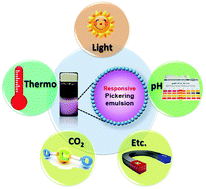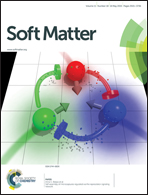Stimuli-responsive Pickering emulsions: recent advances and potential applications
Abstract
Pickering emulsions possess many advantages over traditional surfactant stabilized emulsions. For example, Pickering emulsions impart better stability against coalescence and, in many cases, are biologically compatible and environmentally friendly. These characteristics open the door for their use in a variety of industries spanning petroleum, food, biomedicine, pharmaceuticals, and cosmetics. Depending on the application, rapid, but controlled stabilization and destabilization of an emulsion may be necessary. As a result, Pickering emulsions with stimuli-responsive properties have, in recent years, received a considerable amounts of attention. This paper provides a concise and comprehensive review of Pickering emulsion systems that possess the ability to respond to an array of external triggers, including pH, temperature, CO2 concentration, light intensity, ionic strength, and magnetic field. Potential applications for which stimuli-responsive Pickering emulsion systems would be of particular value, such as emulsion polymerization, enhanced oil recovery, catalyst recovery, and cosmetics, are discussed.


 Please wait while we load your content...
Please wait while we load your content...